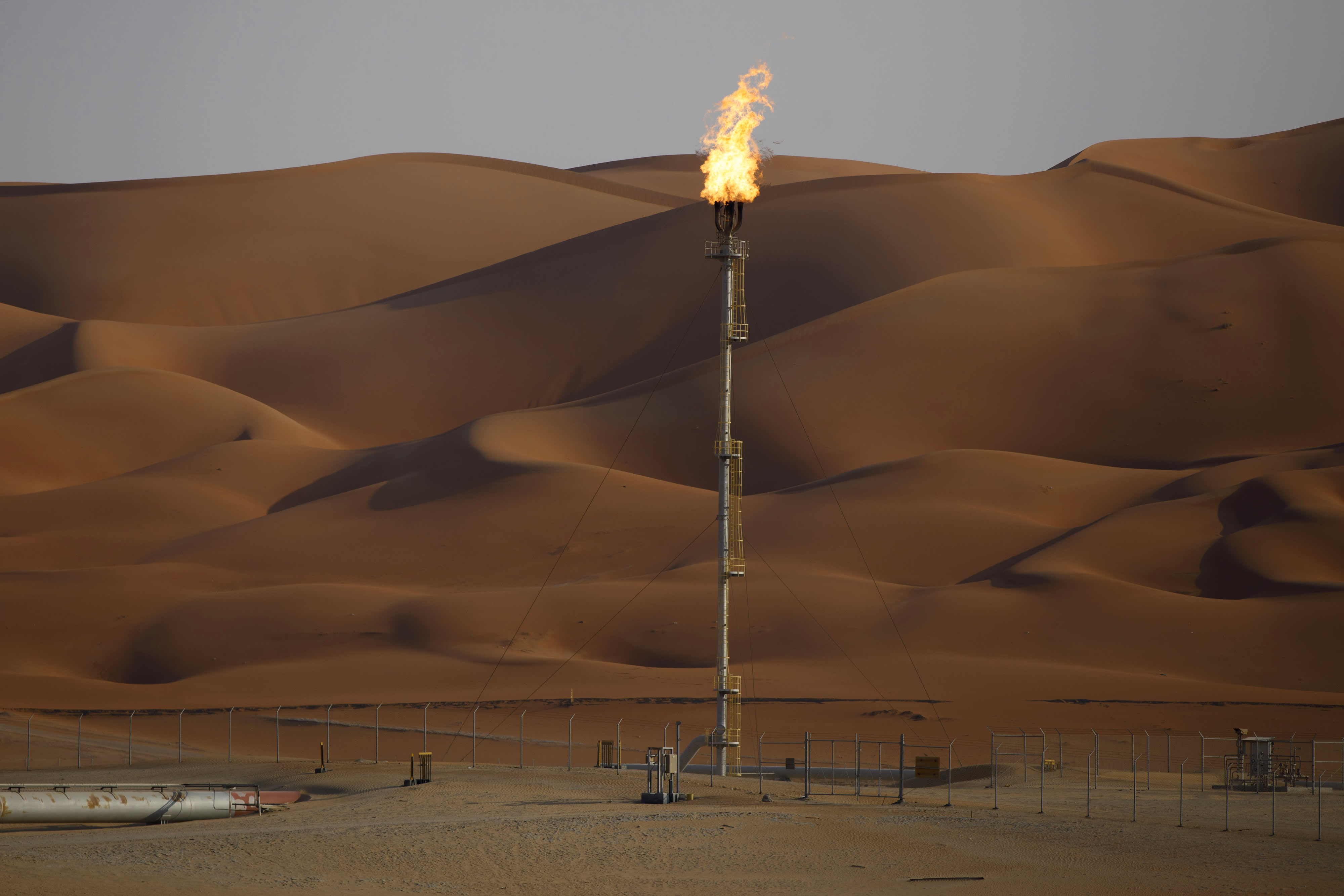The flames burn at an oil processing facility in the Saudi Aramco oilfield in the Rub ‘Al-Khali desert in Shaybah, Saudi Arabia, in October 2018.
Simon Dawson | Bloomberg | Getty Images
Oil prices reached their highest level in more than a year on Monday after a Saudi-led coalition fighting in Yemen said it intercepted an explosive-laden drone fired by Iran-aligned Houthi, raising fears of new tensions in the Middle East.
Hopes for more stimulus in the U.S. and a easing of coronavirus blockages helped support the surge, after prices rose by about 5% last week.
Brent crude rose 66 cents, or 1.1%, to $ 63.09 a barrel at 0004 GMT, after rising to a session high of $ 63.44, the highest since January 22, 2020.
US West Texas Intermediate (WTI) crude futures gained 86 cents, or 1.5%, to $ 60.33 a barrel. It hit the highest level since January 8 last year at $ 60.77 at the start of the session.
The Saudi-led coalition fighting in Yemen said late on Sunday that it intercepted and destroyed a drone loaded with explosives fired by the Houthi group aligned with Iran towards the kingdom, state television reported.
“An initial spike in the oil markets was triggered by the news,” said Kazuhiko Saito, chief analyst at commodities brokerage Fujitomi Co.
“But the recovery was also driven by growing hopes that a US stimulus and a reduction in blockages will boost the economy and demand for fuel,” he said. WTI could be pulled back by profit-taking once it reached the key $ 60 level, he added.
US President Joe Biden pushed for the first major legislative achievement of his term on Friday, turning to a bipartisan group of local officials seeking help with his $ 1.9 trillion coronavirus relief plan.
Oil prices have also risen in recent weeks with supply tightening, largely due to production cuts by the Organization of Petroleum Exporting Countries (OPEC) and allied producers in the OPEC + group.
